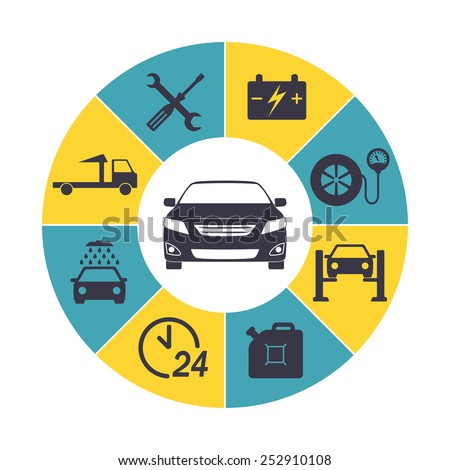Realizing The Importance Of Your Automobile'S Warning Signals: What They In Fact Stand For
Realizing The Importance Of Your Automobile'S Warning Signals: What They In Fact Stand For
Blog Article
Created By-Lim Kejser
When you lag the wheel, those glowing caution lights on your control panel can be a little bit puzzling. Do you understand what they're attempting to tell you about your automobile's health and wellness? Recognizing Discover More of these lights is essential for your security and the durability of your car. So, the next time one of those lights appears, would not you wish to decode its message precisely and take the required steps to address it?
Common Caution Lighting and Interpretations
Determine common caution lights in your car and understand their meanings to guarantee secure driving.
boatwashnz consist of the check engine light, which signals problems with the engine or discharges system. If this light comes on, it's essential to have your car examined immediately.
The oil pressure cautioning light suggests low oil stress, calling for prompt focus to prevent engine damage.
A flashing battery light could recommend a defective charging system, potentially leaving you stranded otherwise dealt with.
The tire stress tracking system (TPMS) light alerts you to reduced tire stress, influencing vehicle stability and fuel performance. Disregarding this might lead to dangerous driving problems.
The abdominal muscle light shows a problem with the anti-lock stopping system, endangering your capacity to stop quickly in emergencies.
Finally, the coolant temperature level warning light warns of engine getting too hot, which can cause serious damages otherwise fixed promptly.
Comprehending these typical warning lights will aid you deal with concerns without delay and maintain risk-free driving problems.
Value of Prompt Focus
Recognizing the typical caution lights in your car is only the primary step; the importance of quickly resolving these warnings can't be emphasized enough to guarantee your safety and security when driving.
When a warning light brightens on your control panel, it's your automobile's method of communicating a possible concern that needs interest. Ignoring https://brake-places-near-me84062.blogoscience.com/37240040/the-total-resource-for-automobile-describing-materials-trick-information-every-novice-need-to-recognize can result in more severe troubles down the road, compromising your safety and security and potentially costing you extra out of commission.
Motivate attention to advising lights can stop breakdowns and accidents. For example, a flashing check engine light might show a misfire that, if left ignored, could create damage to the catalytic converter. Resolving this promptly can conserve you from an expensive fixing.
Similarly, a brake system warning light may indicate reduced brake fluid or worn brake pads, critical elements for your safety when driving.
Do It Yourself Troubleshooting Tips
If you see a caution light on your control panel, there are a few DIY fixing suggestions you can try before looking for expert help.
The primary step is to consult your car's guidebook to comprehend what the certain warning light suggests. Occasionally the concern can be as basic as a loosened gas cap triggering the check engine light. Tightening the gas cap might settle the issue.
An additional usual concern is a reduced battery, which can set off different alerting lights. Checking the battery links for deterioration and ensuring they're safe could take care of the issue.
If a caution light continues, you can try resetting it by disconnecting the auto's battery for a few minutes and after that reconnecting it. Additionally, inspecting your car's liquid levels, such as oil, coolant, and brake liquid, can assist troubleshoot advising lights connected to these systems.
Final thought
Finally, understanding your vehicle's warning lights is necessary for maintaining your automobile running efficiently and securely. By without delay attending to these alerts and understanding what they imply, you can stay clear of pricey fixings and potential breakdowns.
Remember to consult your auto's handbook for specific information on each cautioning light and do something about it appropriately to ensure a hassle-free driving experience.
Keep notified, stay secure on the road!
